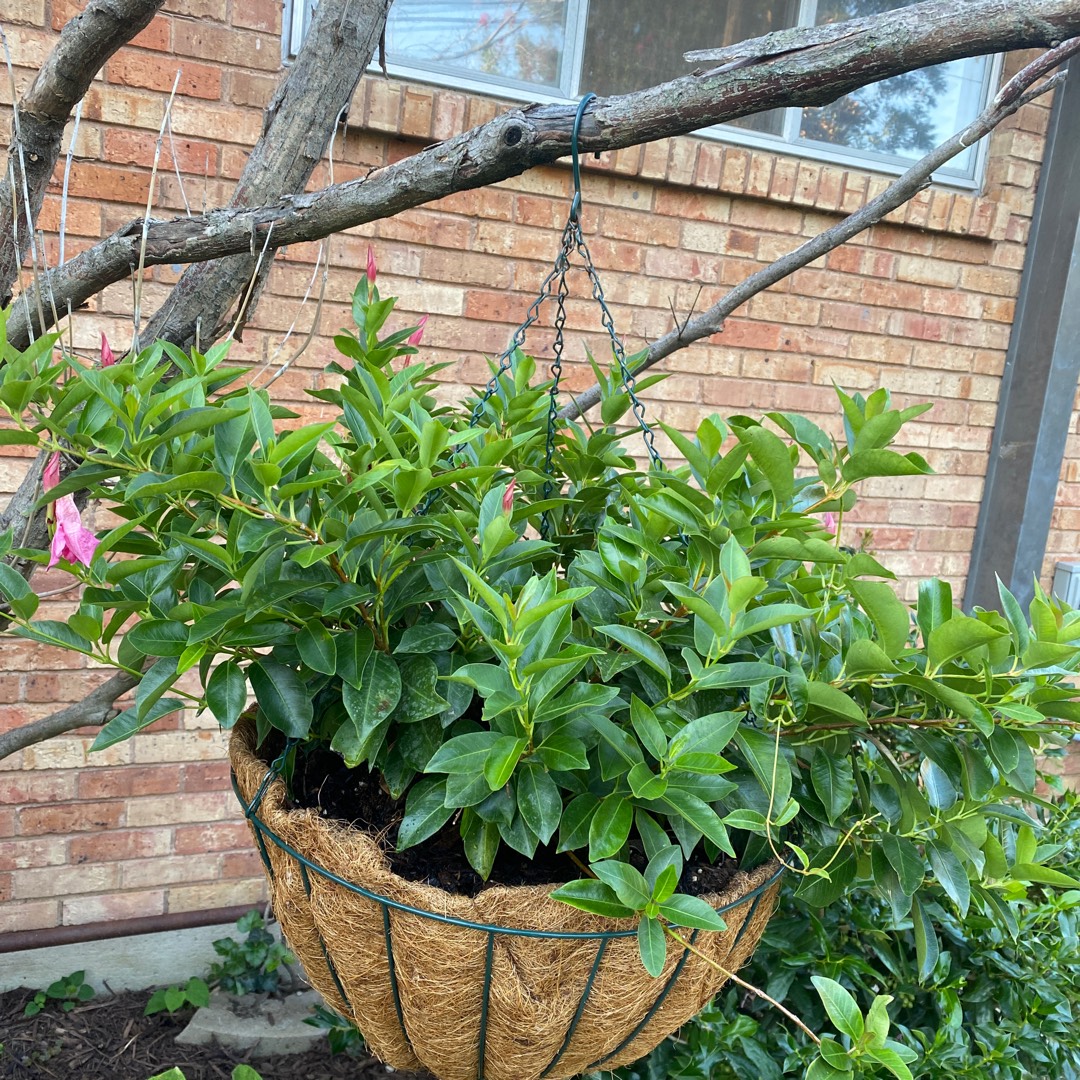
Mandevilla x hybrida 'Summer Romance™ Double Pink' syn. Dipladenia 'Summer Romance™ Double Pink'
Mandevilla 'Summer Romance™ Double Pink'
These evergreen climbers are cultivated for their showy flowers. In temperate climates, they do well in a well lit position indoors where they can be trained up trelliswork or around a circular support. The flowers come in a variety of colours, including white, pink, yellow, and red and in warmer climates, they are often fragrant. 'Summer Romance™ Double Pink' bears 4” pink double blooms from Summer to Autumn on this mandevilla hybrid. The compact climbing stems grow from 18-36” tall.
-
Full sun to partial shade
-
Occasional watering
-
Not Frost hardy
-
Light and free draining
Common name
Mandevilla 'Summer Romance™ Double Pink'
Latin name
Mandevilla x hybrida 'Summer Romance™ Double Pink' syn. Dipladenia 'Summer Romance™ Double Pink'
type
Flowering climber
family
Apocynaceae
ph
5.0 - 7.0 Acid - Neutral
Plant & bloom calendar
-
Best time to plant
full grown dimensions
 0.50 M
1.00 M
0.50 M
1.00 M
Mandevilla x hybrida 'Summer Romance™ Double Pink' syn. Dipladenia 'Summer Romance™ Double Pink'
These evergreen climbers are cultivated for their showy flowers. In temperate climates, they do well in a well lit position indoors where they can be trained up trelliswork or around a circular support. The flowers come in a variety of colours, including white, pink, yellow, and red and in warmer climates, they are often fragrant. 'Summer Romance™ Double Pink' bears 4” pink double blooms from Summer to Autumn on this mandevilla hybrid. The compact climbing stems grow from 18-36” tall.
Planting
From Early Spring TO Early Spring
Mandevilla need sandy, well-draining soil with plenty of organic material mixed in. A good soil mix for mandevilla plants includes two parts peat moss or potting soil to one part builder’s sand. If planting outdoors in warmer climates, a light and well drained soil with plenty of organic material mixed in is preferred. Plant in a bright position with filtered sun light avoiding full mid-day sun. They need a minimum temperature of 15C during active growth and a minimum winter temperature of 7C.








